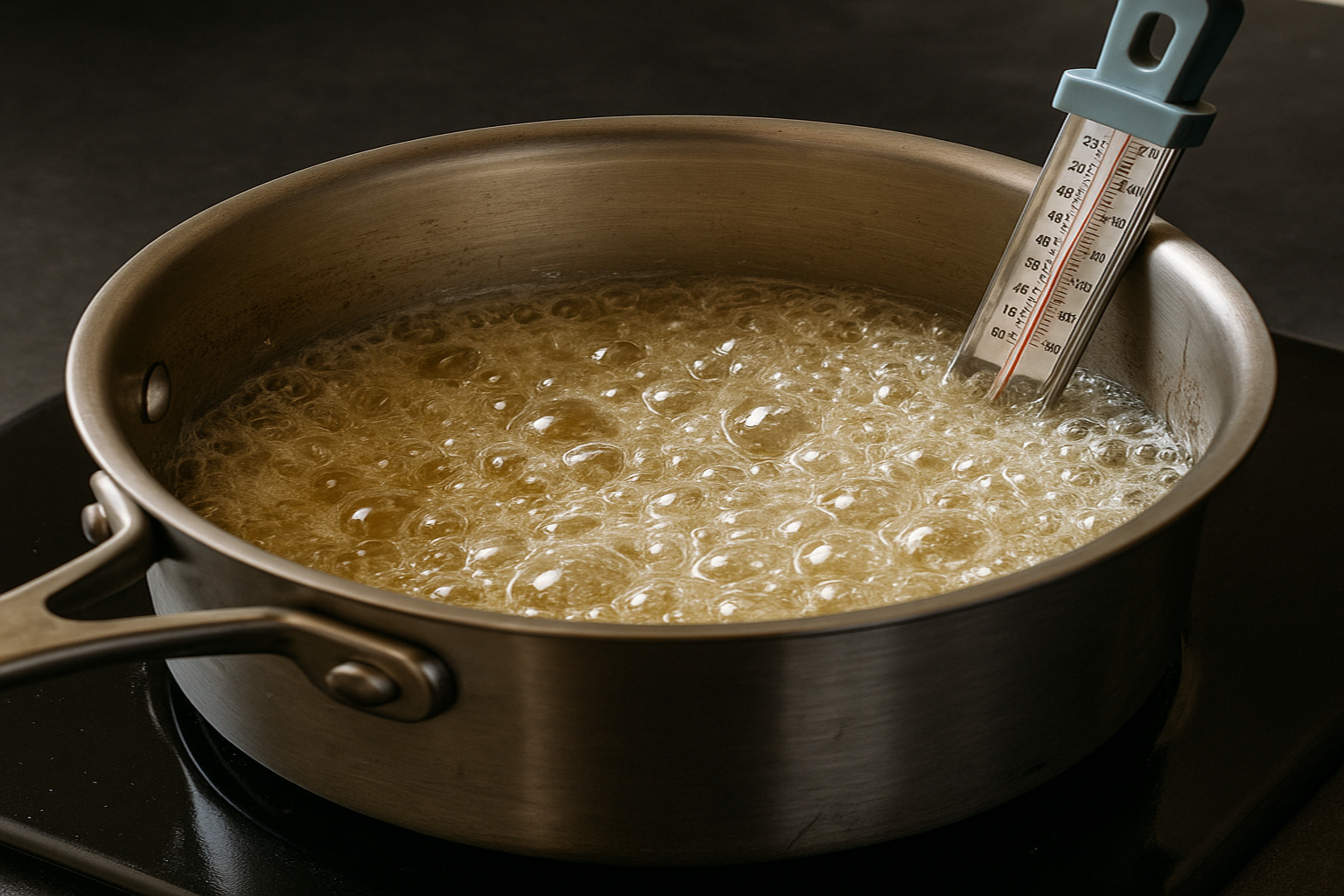Making sugar syrup sounds simple — just sugar and water, right? But anyone who’s tried to make a perfect syrup for candies, caramel, glazes, or certain types of frosting knows that nailing the right consistency can be surprisingly tricky.
Whether you want a thin syrup for soaking cakes, a thick one for drizzling, or something precise like a soft-ball stage for fudge, this guide will walk you through everything you need to know.
Let’s explore how to make sugar syrup perfectly, every time.
What Is Sugar Syrup?
Sugar syrup is simply a mixture of sugar and water that’s heated until the sugar dissolves and the mixture thickens. The exact consistency depends on the cooking temperature, which determines the concentration of sugar in the solution.
In pastry and confectionery, sugar syrup is used to:
- Sweeten drinks and cakes
- Glaze pastries
- Bind ingredients in candies
- Add moisture to desserts
- Make caramel or toffee
The Basic Ratio: Sugar to Water
The simplest syrup starts with a basic ratio:
- 1 part sugar to 1 part water for a thin syrup (called “simple syrup”)
- 2 parts sugar to 1 part water for a thicker, richer syrup
This mixture is heated until all the sugar dissolves. After that, you can control the consistency by adjusting how long you cook it.
Understanding Sugar Syrup Stages
As the syrup boils, water evaporates and the sugar concentration increases, raising the boiling point. Each temperature corresponds to a different syrup stage, used for various purposes.
Here are the main stages to know:
| Stage | Temp (°C / °F) | Description | Best For |
|---|---|---|---|
| Thread | 106–112°C / 223–234°F | Syrup drips in a thin thread | Glazing, pouring over cakes |
| Soft Ball | 112–116°C / 234–240°F | Syrup forms a soft ball in cold water | Fudge, marshmallows |
| Firm Ball | 118–120°C / 244–248°F | Firmer ball that holds shape | Caramel candies, nougat |
| Hard Ball | 121–130°C / 250–266°F | Solid ball that remains pliable | Lollipops, rock candy |
| Soft Crack | 132–143°C / 270–289°F | Brittle threads form | Toffee, butterscotch |
| Hard Crack | 146–154°C / 295–310°F | Hard, brittle texture | Brittle, caramel shards |
| Caramelization | 160°C+ / 320°F+ | Sugar darkens and caramelizes | Sauces, coatings, deep caramel flavor |
⚠️ Tip: Use a candy thermometer to monitor the temperature precisely. It’s worth the small investment.
How to Make Sugar Syrup Step-by-Step
Here’s how to prepare sugar syrup for most uses:
Ingredients:
- 1 cup sugar
- ½ cup water
Instructions:
- Combine the sugar and water in a clean saucepan.
- Stir gently just until the sugar is moistened.
- Heat on medium, without stirring. Let the sugar dissolve naturally.
- Once boiling, use a pastry brush dipped in water to clean the sides of the pan (to prevent crystallization).
- Insert a thermometer and monitor the temperature closely.
- Remove from heat at the desired temperature, based on the stage you want.
- Cool slightly before using, or transfer to a jar for storage.
Never stir the syrup once it starts boiling — this encourages unwanted crystallization.
Common Mistakes to Avoid
❌ Stirring While Boiling
This disrupts sugar crystals and can cause the syrup to seize or crystallize.
❌ Using Dirty Utensils
Even a small impurity can “seed” the sugar and ruin the syrup’s texture.
❌ Skipping the Thermometer
Trying to guess the stage visually is very hard. Use a thermometer for accuracy.
❌ Cooking on High Heat
Rapid boiling may burn the syrup or cause uneven results. Always use medium to medium-high heat.
Tips to Get It Just Right
- Add lemon juice or corn syrup (a teaspoon) to prevent crystallization in syrups meant for storage.
- For a richer flavor, use brown sugar instead of white sugar.
- Want flavored syrup? Add vanilla bean, cinnamon stick, or orange peel while cooking, then strain after cooling.
- Store cooled syrup in a sterile glass jar in the fridge for up to 1 month.
Final Touch: Mastering Syrup Takes Practice
Like many kitchen techniques, getting sugar syrup just right comes with a bit of practice — and patience. The good news is that once you learn the basics and avoid common mistakes, you’ll gain a powerful tool for your sweet creations.
From silky glazes to chewy caramels, mastering sugar syrup will unlock dozens of homemade dessert possibilities. All it takes is the right timing, a little science, and a lot of love.

